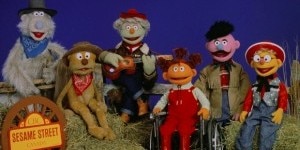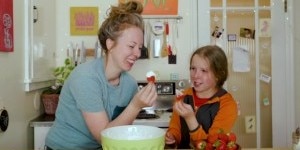
all
Tech & Media
The Canadian Connection to Sesame Street You Probably Didn’t Know About
By Kevin Naulls, CBC Parents Staff
Photo © CBC Still Photo Collection
Nov 8, 2019
Gather the kids, because it’s time they learned the Canadian connection to Sesame Street.
You may already know about Sesame Park, and I’ll get to that in a moment, but did you know that there was something called Canadian Sesame Street?
If you did — you’re awesome. But if this is news to you, or if you want a refresher, here’s why Sesame Street is more Canadian than you might think.
The Threat of Cancellation
Canada almost lost Sesame Street. Did you know that? Well, the True North Strong and Free almost vanished because of the letter Z.
For the little ones: ‘zee’ is our ‘zed’. That letter at the end of our alphabet. Americans use ‘zee’ and Canadians use ‘zed.’
In the 1970s, Canadian broadcasters decided it was too American and they were trying to up their Canadian content (CanCon) quotas. Some stations even did take it off the air, which led to extremely adorable and effective child-led protests with signs that read “Bring Back Bert” (aw, but seriously — look at this adorable protester).
So yes, even though today we see young people protesting and marching for climate change in large numbers, it’s important to remember that even in the 1970s, kids were mobilizing. For Bert. (Aw.)
As Matthew Hayday writes in his paper Brought To You by the Letters C, R, T and C: Sesame Street and Canadian Nationalism, the young crusader for Bert in Kingston wasn’t the only protester. In fact, protests were happening across Canada. And in Kingston, the protest was effective. By the next day, Sesame Street was back.
But Sesame Street was picked up in the ’70s, around the exact time CanCon rules were changing, so the longevity of Bert, Ernie, Big Bird and friends was under some serious question.
How to Save a Life
Just before I was born (1985 baby here), the CBC, where I work (full disclosure), cooked up a plan to save Bert for that little girl in Kingston, Ont. (and, truly, kids across the country). Canada would get a Canadian Sesame Street — not Sesame Park, be patient! — that began in 1972. What that meant was this: new Canadian segments would be produced to replace American ones, and linguistically Americanisms would be removed and replaced. Bring on those zeds, baby.
Eventually, there was even a French-Canadian cut of the show called Sesame, which mostly featured muppet segments with Blaise (that’s Bert), Gustave (that’s Grover) and Croque-Croque (that’s Cookie Monster).
A lot of the rationale for these changes is steeped in media regulations, which would be truly boring for your kids to hear about from you. So, I’m going to spare you that bit of history (but you should read Hayday’s piece, because it’s extremely thorough and interesting).
But if you’re like me, you love knowing that French Cookie Monster is named Croque-Croque. Just say that name to your kids, they will love hearing the cacophony.

A Mission to Canadianize
Hayday notes in his paper that the CBC had some guiding principles to make it more Canadian. They would remove Spanish content as much as possible; replace Spanish content with more distinctly Canadian offerings; offer second-language (French) instruction for English kids; and reflect Canada’s multiculturalism and Indigenous heritage.

Basically, what this amounted to were segments like one on the Canadian flag, counting the provinces of Canada and learning how to say French words. You may even recall the iconic Buffy Ste. Marie being on the show and being the first adult to believe in Snuffy’s existence. I believe, too.
It’s Canadian — But Make it More Canada
By the 1980s, more segment time was added to the show that was exclusively Canadian. And it featured a beaver named Beau, which could not possibly be more Canadian. But it could, because Beau, according to scholar Richard F. Lewis, taught kids about snowshoes, voyageurs and Canadian coins.
You could also see Valdy, Fred Penner, Sharon, Lois and Bram, Mr. Dressup and a host of other Canadian performers on the show, so it even served as a way to expose Canadian talent to a wider audience.

Before it ended, segments were produced all over Canada in Winnipeg, Montreal, Toronto, Halifax, Vancouver, Regina, Edmonton, Ottawa and Yellowknife. Maybe you live in one of these places? Heck, that means you live on a Sesame street! At least in my heart.
And in 1985, I was born. And so was the idea for Sesame Park, which would debut in 1996. The show replaced Canadian Sesame Street and featured Canadian muppets Basil the Bear, and Dodi the pilot.

And that, parents, teachers, caregivers and kids, is how truly Canadian Sesame Street is.
Most Popular
-
 Ages:
Ages:
allStories
Childhood Is Too Short So Just Let The Teens Trick-Or-Treat
-
 Ages:
Ages:
allFamily Health
Why Being A Halloween Candy Micromanager Can Create Long-Term Problems For Kids
-
 Ages:
Ages:
allStories
My Daughter Wore a 1960s-Inspired ‘Indian’ Costume — And Here’s How I Took Care of That
-
 Ages:
Ages:
allStories
I’m Not Your Typical Mom — Here Are 5 Assumptions You Have All Wrong
-
 Ages:
Ages:
allStories
Here’s Why We’re Ditching Trick-or-Treating This Year
















 Remembrance Day
Remembrance Day


































Add New Comment
To encourage thoughtful and respectful conversations, first and last names will appear with each submission to CBC/Radio-Canada's online communities (except in children and youth-oriented communities). Pseudonyms will no longer be permitted.
By submitting a comment, you accept that CBC has the right to reproduce and publish that comment in whole or in part, in any manner CBC chooses. Please note that CBC does not endorse the opinions expressed in comments. Comments on this story are moderated according to our Submission Guidelines. Comments are welcome while open. We reserve the right to close comments at any time.
Submission Policy
Note: The CBC does not necessarily endorse any of the views posted. By submitting your comments, you acknowledge that CBC has the right to reproduce, broadcast and publicize those comments or any part thereof in any manner whatsoever. Please note that comments are moderated and published according to our submission guidelines.